The dog days of summer are upon us. As the mercury skyrockets and the sun broils us 15 hours a day, few things are more attractive than leaving town and heading into the mountains to dunk a line (and maybe some sweaty feet) into a newfound creek or stream.
For anglers looking to escape the hustle and bustle of town, or potentially crowded lakes and reservoirs, mountain streams are a gateway to peace and quiet. Idaho is full of long, meandering river systems like the Boise, Big Wood, Bear Valley, Salmon, Clearwater and St. Joe that provide hundreds of easy, accessible fishing sites.

What’s often overlooked are the headwaters and tributaries of those famous trout streams. They’re typically teeming with trout, less crowded and provide an opportunity for solitude in the mountains. Naming names would defeat the purpose of discovering backcountry streams. It usually doesn’t matter what its name is, or how narrow it is, chances are good there are fish to be caught and memories to be made.
If you’re new to the concept of finding mountain streams to fish, here are some pointers to help find the perfect creekside fishing camp this summer.
The long blue lines
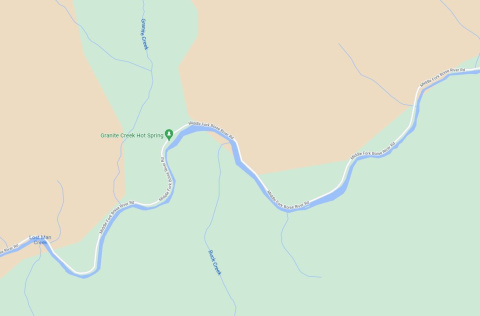
Firstly, don’t overlook those tiny streams trickling through meadows or snowmelt creeks flowing into larger rivers. Often depicted as narrow, blue lines on a topographic map, these creeks and streams can provide ideal conditions for fish.
Using Google Earth, paper Forest Service maps or your favorite outdoor GPS app, pull up an area you’re wanting to scope out. Maybe drop in a nearby designated campground in the search bar for quick and easy directions. Narrow in on widely used forest service roads that sometimes follow major waterways.
Now you’ve got a starting point. Oftentimes, main roads skirting along a river sprout side roads that traverse smaller creeks and provide any number of camping and pulloff opportunities.
Hot Tip: You’ll often hear experienced anglers talking about “pools” when it comes to fishing on flowing water. These barely moving, deep pockets along a waterway are where fish like to hang out most of the time. Think knee- to chest-high water that you’d want to swim around in yourself. When you’re traveling along a road in search of a prime fishing spot, this should be the first feature you look for.
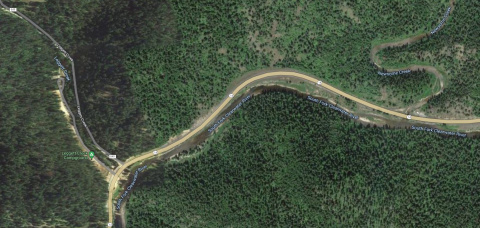
Lastly, before you embark on a weekend getaway into Idaho’s deeper crannies, do your homework. Look for roads that best suit your mode of transportation and comfort level, and follow those blue lines on the map. Stick to wider, more-traveled dirt roads for passenger vehicles and 4x4, high-clearance mountain roads for more aggressive vehicles.
And just because a blue line on a map is pencil thin, doesn’t mean it won’t hold fish. A lot of times, it’s where the bite is strongest.
Bigger doesn’t always mean better
When it comes to locating a creek or stream, bigger doesn’t always mean better. By late summer, a lot of the spring runoff has slowed to a crawl and streambanks are exploding with green grasses and willows. Trout keep a watchful eye for any insect, ant or grasshopper that falls into the water and provides a quick meal.
While there are times when a hog of a trout winds up on the end of a high-country angler’s line, the majority of fish found in mountain streams and creeks are going to be modest sized. But what they lack in size, they make up for in abundance and eagerness.
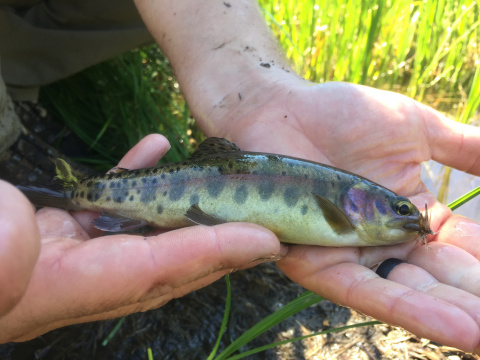
Lower sections of rivers can get uncomfortably hot for trout during summer; the upper elevations stay cool and the perfect temperature for trout, which keeps them active and feeding aggressively.
Fish in these waterways don’t see the kind of angling pressure that larger rivers and lowland lakes do. Their growing season is also a lot shorter. Oftentimes these ravenous fish will go after just about anything you throw in front of them. Anglers looking to head out on a backcountry fishing adventure in search of small streams and creeks should not be lugging along that 9-weight fly rod or a 25-pound test Chinook setup. Instead, you’ll want to keep your setup as light as possible. Short, light and sensitive rods are the ticket for big fun catching small fish.
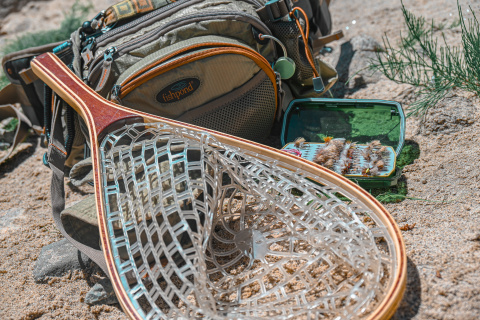
Choose your weapon
There are two basic methods: fly rod or spin rod. Both are tried and true, and rely on different techniques to mimic fish food.
Spin rod fishing is slightly more affordable and a lot more approachable for newer anglers who are testing the waters. Not only are spinning rods durable, their compact design allows anglers to cast from even the brushiest of shorelines. (If you’ve snagged a $10 lure on a pine branch it goes without saying).
A 5- to 7-foot spin rod with lightweight line (4-pound test is a good starting point) can be picked up at pretty much any sporting goods store.
A few aisles over and you’ll be hit with an almost endless selection of lures, spoons, spinners and bait to choose from. Remember, keep it simple. Tying on a barrel swivel that connects to a spoon or spinner is a great way to get a fish’s attention. Add a piece of worm to sweeten the deal. And keep in mind, alpine river fish like trout and whitefish aren’t used to seeing the angler’s same bag of tricks as say a 16-inch rainbow down at Arrowrock Reservoir. Dangle a little flashy lure and maybe a chunk of live bait in front of their nose and they’ll hit it like Conor McGregor.
Hot Tip: If fishing with young ones, let their budding fascination with bugs run wild. Letting your kids connect with nature by way of both fish and bait is a great way to instill outdoorsmanship in a young mind. If your little fishing buddy manages to capture a grasshopper or cricket, use it as bait to better your odds at attracting hungry fish.
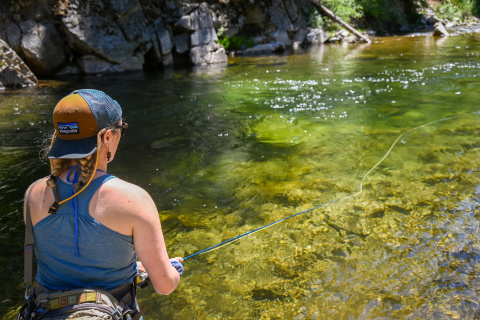
Fly rods also provide a fun and challenging lesson in stream fishing. In general, a 7- to 9-foot-long fly rod spooled with 3- to 5-weight line is a good fit for alpine streams and creeks. Attach some 4X or 5X tapered leader to the end of your line, about 9 to 12 feet worth.
Then, decide on whether you want to use dry flies or subsurface flies (nymphs or streamers). Fish in alpine waters can be picky at times, but if you find the right pool at the right time of day (generally early mornings or late afternoons) you might catch them while they’re active.
Watching a fish go after a fly or lure is one of the most exciting moments in an angler’s life. Keep it simple and keep moving. If you don’t catch anything in one spot, move up or downstream. A good strategy is to pick a stretch of water, say a half mile or so, and try to get a lure or fly into every spot that looks “fishy.”
Your own private Idaho…beach
Mountain streams and creeks also offer new and experienced anglers and their families abundant opportunities to “fish from camp.”
For families in particular, this is an added benefit. With a streamside camp, children are safe from the road and can roam to their heart’s extent flipping over rocks, collecting treasures, observing wildlife and maybe even sniff out some insects for bait.
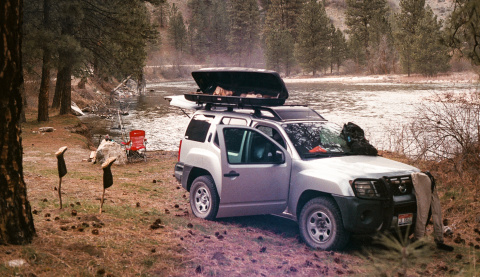
It’s no secret that Idaho boasts one of the greatest camping opportunities in the country. There’s no shortage of public lands, designated campgrounds, dispersed campsites and roadside pullouts to get yourself front-row fishing access right out your camp’s backdoor.
When you’re researching places to go, look for rivers, streams and creeks that follow along forest roads. Once you ballpark a location, turn on the satellite image feature and zoom in to look for natural access sites. Roadside pullouts, large meadows, trails, gentle sloping banks and designated campgrounds can all be seen from the air and can be a great place to start.
To take your backcountry adventure to the next level, try combining a day of fishing with a night out camping. Pick a spot along a mountain road that feels safe and accessible to the river. That basalt cliff might provide a sweet view at sundown, but it’s going to be nearly impossible (and unsafe) to reach the river. Oftentimes you can find cozy little cutouts with a rock fire ring and ample trees for shade. Once you establish home base for the night, it’s time to park the car and rig up the poles.
To the fisher go the spoils
There’s one final element to backcountry stream fishing that can cap off the perfect outdoor experience: eating your catch. (Just double check the Idaho Fish and Seasons and Rules booklet to makes sure harvest is allowed on your stream.)
The day is finally winding down and you start to feel the sun’s heat give way to the evening mountain shadows. Your skin is cooked and your feet are sore. For those anglers who pleased the fishing gods and walked away with a fish or two for the cooler, the reward for hard work and patience is minutes away from sizzling in a skillet.

Hot Tip: If you’re steering more towards a camping trip, be sure to pack a few essentials in case you do haul in a few fish. A good cast-iron skillet with butter and herbs is a choice way to cook up some trout. Alternatively, you can stuff the fish with lemon and butter, then wrap it in a couple layers of aluminum foil to set over a low fire.
There’s nothing quite like the taste of a wild-caught fish from mountain waters. Sure, they’re not the whopper that’s going to land you in the state record books, but they will surely fill up space in your scrap book. What they lack in size they make up for in flavor and memories.
So next time you’re sitting around your streamside campsite wondering how to cure the boredom blues, be sure to include a fishing rod, some basic tackle, lures or flies and a few kitchen fixins to connect with nature in a fun, new (and delicious) way.
To learn more and to check fishing regulations and rules, check out the 2022-2024 Idaho Fishing Seasons and Rules booklet available online, at license vendors or any Fish and Game offices.

